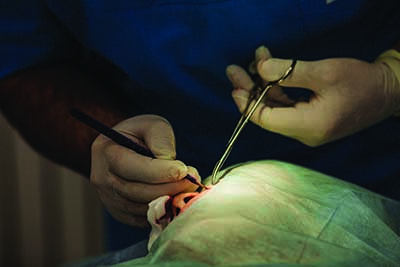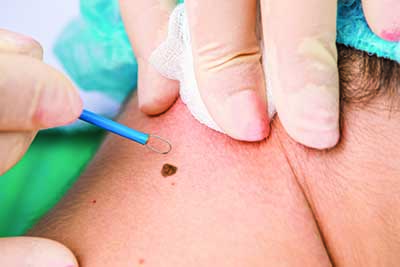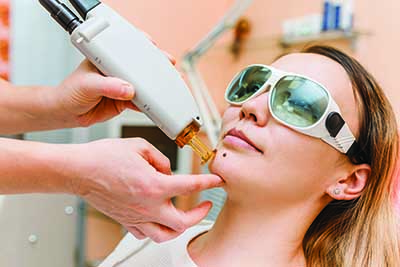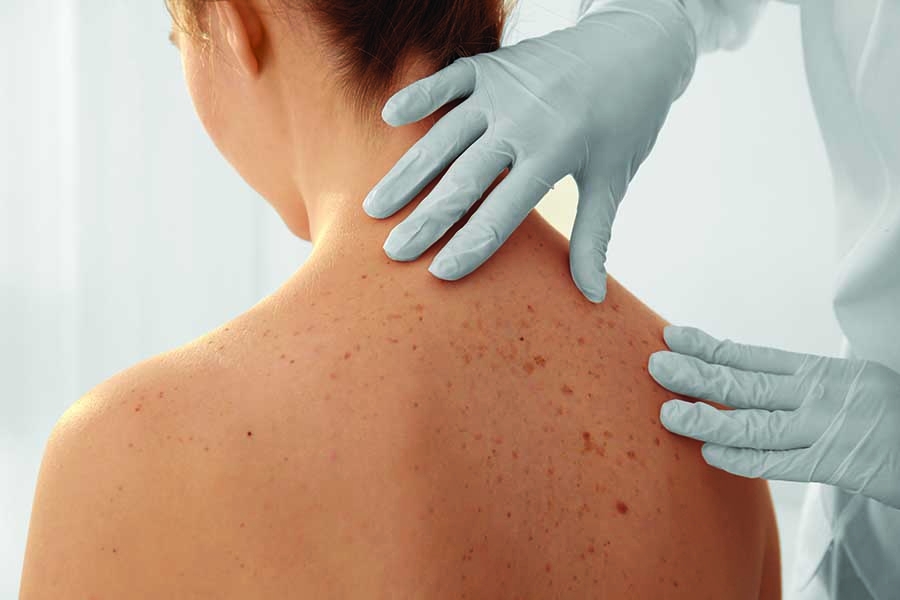Skin Cancer Doesn’t Discriminate: Finding the Best Treatment Options for a Nonmelanoma Skin Cancer Diagnosis
Written by Christopher V. Crosby, M.D., Ph.D., FAAD, FACMSWhile it seems logical that people who live in sunny, warm states – like Florida, California, or Texas – would have the highest incidence of skin cancer, the facts prove otherwise. The Centers for Disease Control reports that those who live in Utah, Delaware, Vermont, Minnesota, and Idaho have some of the highest rates of skin cancer. Why? It is most likely because they have only occasional exposure to the sun, leaving them at greater risk of sunburn – even during the cold, winter months – which predisposes them to various forms of skin cancer.

Nonmelanoma skin cancer (NMSC) is the most common form of skin cancer, regardless of where individuals reside. An estimated 3 million people are diagnosed with NMSC annually, according to research published in the Journal of American Medical Association Dermatology. The incidence of the two most common types of NMSC, squamous cell carcinoma (SCC) and basal cell carcinoma (BCC), have increased significantly over the last two decades. A study published by the Mayo Clinic in June 2017 found that diagnoses of SCC grew by 263 percent and BCC by 145 percent between 2000 and 2010.
While many patients have NMSC on the head and neck, it can occur on any part of the body. Additionally, although skin care professionals cannot treat or diagnose NMSC, understanding the treatment options available can be beneficial. It can aid professionals in encouraging clients with NMSC to visit a licensed physician for treatment and diagnosis and help with understanding and communicating with these clients in general.
TREATMENT OPTIONS
There are a number of options available to treat NMSC.
Excision
Excision is one of the more common treatment options and involves surgical removal of cancer cells and surrounding healthy tissue, which is referred to as the margin. According to the American Academy of Dermatology Guidelines of Care, excision is an effective treatment for both primary and recurrent tumors. For small (less than 20 millimeters in size), primary, well-defined NMSC, this procedure can have up to a 95 percent cure rate. Excisions usually heal well with proper suturing. However, some areas of the body are prone to slow healing and scarring. Sometimes, other medical conditions can make these problems worse.

Electrodesiccation and Curettage
This is a procedure in which cancerous cells are removed using a curette. The area is then treated with an electric current that helps control bleeding and destroys any remaining cancer cells. Electrodesiccation and curettage is best suited for small primary lesions in non-cosmetically sensitive areas.
Mohs Micrographic Surgery
Mohs surgery has become the “gold standard” treatment of NMSC. This surgery entails removing a skin lesion one layer at a time and studying each layer and its margins under a microscope for the presence of cancer cells. With Mohs surgery, practitioners can examine the tumor’s margin, reducing the chance of recurrence of NMSC. Mohs surgery is very effective for many patients, and with the proper reconstructive techniques, usually results in excellent cosmetic outcomes. However, in certain cases, patients may require multiple reconstructive procedures that result in additional costs, additional recovery time for the patient, and increased risks of complications.
Radiation Therapy
Various types of radiation therapy, including brachytherapy, orthovoltage, and electron beam treatment, have been used for decades to treat NMSC. However, these treatments can be cumbersome for both providers and patients. During radiation treatment, patients must be alone in the treatment room while healthcare professionals remain far enough away to reduce their risk of radiation exposure. In addition, traditional radiation regimens usually consist of daily treatment sessions for up to six weeks, which can present logistical challenges and significant inconvenience to patients.
Electronic Brachytherapy
Electronic brachytherapy (eBx) is a new form of low-energy radiation therapy that is clinically proven to be safe and effective for appropriate patients. It is a great option for patients who are over the age of 70, since younger patients have a slightly higher risk of developing secondary cancers from radiation treatment. This therapy is recommended for patients with lesions in anatomically challenging locations or patients who may have medical comorbidities (such as dementia or Parkinson’s disease) that may make surgery difficult to handle. It is also an option for patients who may be tired of undergoing multiple surgical procedures or those who prefer not to have surgery for personal reasons. Compared to traditional radiation, eBx is painless, non-invasive, and involves a shorter course of treatment.
 Regardless of where the spa is located or the amount of sun clients encounter, it is important for them to visit their dermatologist to manage sun damage to their skin and address any precancerous legions before they progress. Even with regular follow-ups, skin cancer may occur. There are many treatment options to consider after a skin cancer diagnosis is made and having a close relationship with a dermatologist will ensure that clients catch it early and find the best treatment for their unique needs.
Regardless of where the spa is located or the amount of sun clients encounter, it is important for them to visit their dermatologist to manage sun damage to their skin and address any precancerous legions before they progress. Even with regular follow-ups, skin cancer may occur. There are many treatment options to consider after a skin cancer diagnosis is made and having a close relationship with a dermatologist will ensure that clients catch it early and find the best treatment for their unique needs.
